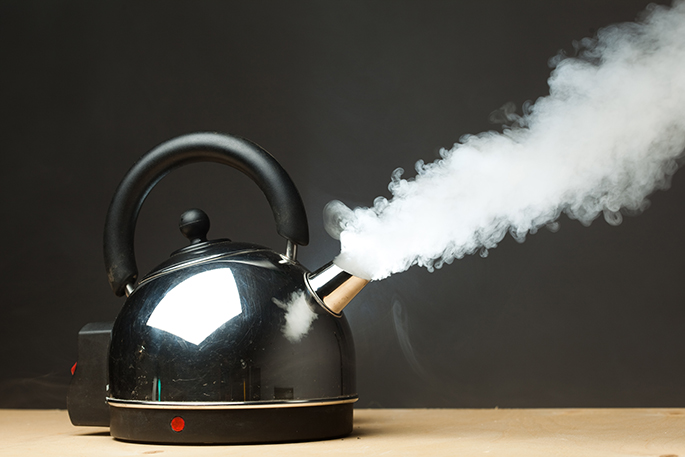Consumer NZ stripped down two kettles with a whopping $374 price difference and found that, while they’re remarkably similar, one is much more likely to go the distance.
Kettles are a staple appliance in most households.
Whether you fork out hundreds for a stylish statement kettle or buy a budget model you should ultimately get the same result – boiling water.
The kettles
Consumer tested and deconstructed two kettles at either end of the price spectrum. At the time of testing, the Kmart kettle was $25 and the Dualit model was $399.
While the Kmart model was noisier and slower to boil, both kettles performed well in Consumer's appliance test.
One major point of difference between the models was their repairability. The Dualit model is repairable, although the spare parts are pricey, and most repairs need to go through an authorised service agent.
Kmart does not provide spare parts, making repairs practically impossible.
“Based on the sums alone you might decide you're better off buying multiple cheap models and throwing them away when they reach the end of their useful life,” say Paul Smith Consumer Head of Test.
“We are convinced it must be possible to produce a reasonably priced kettle, that performs well, and can be repaired easily and affordably if it develops a fault.”
Consumer’s test team dismantled the appliances and assessed the likelihood of both kettles developing common faults.
“Dissecting the kettles showed us that the parts and manufacturing were generally lower quality in the Kmart model – which is not surprising.
“We also spotted areas where the design of the Kmart model could lead to faults which are common in kettles.”
Designed to fail
Consumer's appliance reliability survey found lids were a problem in almost a quarter of all faulty kettles, either not staying closed or failing to open at all.
“The lid of the Dualit model, while potentially less convenient to use than the K-mart model, has a robust design. It's unlikely Dualit's lid would cause the product to fail.”
In Consumer's survey, leaks were another commonly reported kettle fault, with leaks springing from the handle, base, lid, spout and fill-level indicator.
“The design of the pricier kettle means it should remain leak free.”
Consumer's surveying found a lot of faulty kettles would not work at all, wouldn’t turn on, or stay on, some wouldn’t heat water, and some blew up.
“Dualit has a 'patented replaceable element’, a combination of the element, power switch, thermostat and power-indicating LEDs.
“The availability of these parts means the kettle is almost entirely repairable. However, this repairability comes with a hefty price tag.
“You shouldn't have to shell out $400 to buy a kettle that's repairable, especially when those repairs are also pricey.
“Our research shows 12 per cent of kettles develop a fault within 5 years of purchase.
“We expect even the cheapest model to be up to at least 5 years’ of household use,” says Paul.
Yet, one-fifth of faulty kettles reported in Consumer’s survey were less than a year old, and a whopping 66 per cent of failures occurred before the kettle's third anniversary.
What's more, almost half of faulty kettles end up in landfill – contributing to New Zealand’s serious e-waste issues.
Each year New Zealanders throw away 97,000 tonnes of e-waste. That's enough to fill Eden Park up to the top of the tallest grandstand and fill all 60 floors of the Sky Tower too.
The right to repair
Consumer NZ wants New Zealanders to join its call for a repairability label – so shoppers can make informed choices based on how easy a product is to repair, and ultimately how long it should last.
“A mandatory repairability label would force retailers and manufacturers to lift their game – this would be good for our planet and our back pocket too.
“Please sign our petition and demand a repairability label.”



0 comments
Leave a Comment
You must be logged in to make a comment.